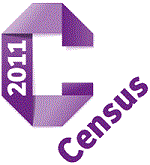Positive action doesn’t always match reality
[I am putting on my tin hat as I begin this post …]
From time to time on this organ our contributors pass comment upon the domination of the media by ‘right-on’ PC-driven campaigners, in ‘equality for all’ mode, demanding greater representation in all areas of UK life of minority ethnic, sexuality and gender groups.
We see it in the BBC’s obsession with seeking to break the traditional male sports’ hegemonic domination of the airwaves by giving equivalent female versions of them equal billing and prominence – either to make a point of principle and/or promote the cause of female sporting activity generally.
At the same time – in ‘enlightened circles ‘ (many of them embedded deep in and throughout the UK media) – any opinions or feelings tending towards puzzlement – or worse, protest or ridicule – expressed at these developments are all-too-easily dismissed as the ravings of ancient, old-fashioned, reactionary dinosaurs whose time has long passed and whose attitudes are therefore irrelevant. [And okay, yes, I’m coming out of the woods with my hands up].
 I was reminded of these themes overnight when I came across this report by Emer Scully on the hysterical social media reaction to a photograph of its entire production team put out by the company that made the BBC’s hit police procedural drama series Line Of Duty which scored mega-ratings recently when finishing its latest outing – see here on the website of the – DAILY MAIL
I was reminded of these themes overnight when I came across this report by Emer Scully on the hysterical social media reaction to a photograph of its entire production team put out by the company that made the BBC’s hit police procedural drama series Line Of Duty which scored mega-ratings recently when finishing its latest outing – see here on the website of the – DAILY MAIL
In response, just for the hell of it, I decided to conduct a little exercise to find out the relative proportions of various minority groups in the UK. I thought it might be interesting to find out – if these were to be represented on screen and and elsewhere according to their preponderance in the population – what the impact would be. After all, arguably, giving due prominence to minority/disadvantaged groups and indeed the range of diversity in the country should also take into account their proportions, should it not?
 Here are some results from my research, many of them taken from the 2011 Census:
Here are some results from my research, many of them taken from the 2011 Census:
In terms of population (racial origin), in England and Wales, the percentages in 2011 of those of White origin was 86%; Asian 7.5%; Black 3.3%; Mixed/multiple 2.2%; Other 1.0%.
 Turning to sexuality – and taking the UKgov survey of 2009 across Britain as a whole – 91% of the population identified as hetereosexual; 5.8% as gay, lesbian or bisexual; and most others didn’t want, or couldn’t be bothered, to answer.
Turning to sexuality – and taking the UKgov survey of 2009 across Britain as a whole – 91% of the population identified as hetereosexual; 5.8% as gay, lesbian or bisexual; and most others didn’t want, or couldn’t be bothered, to answer.
Elsewhere I found a figure for those who are transgender of 0.2%.
It’s interesting how those screaming from the rooftops about lack of diversity and/or representation etc. are seemingly selective in their accusations.
Take the Daily Mail article that this post features, for example: at one point it criticises the fact that of the 23 cast members just 5 were BAME. By my reckoning that works out to a percentage of 21.7% – compared to a BAME percentage of the England & Wales population of 14%.
By the same token – if someone wishes to insist upon ‘appropriate’ representation being given to those of transgender persuasion – then perhaps the producers of Line of Duty should have made sure that (my calculator suggests) that 0.046% of one cast member in its latest series was transgender.
Perhaps this morning I should finish and send the letter I am currently drafting to the head of programming for BBC Radio, pointing out to him (or her) a few facts of life – and stating that, by the end of 2019, I expect to see at least 86% of all rapper-type music featured across the BBC radio output to be performed by artistes of white origin – and at least 18% of it by artistes over the age of 65 [percentages taken from the 2011 Census].
I’m just saying …

